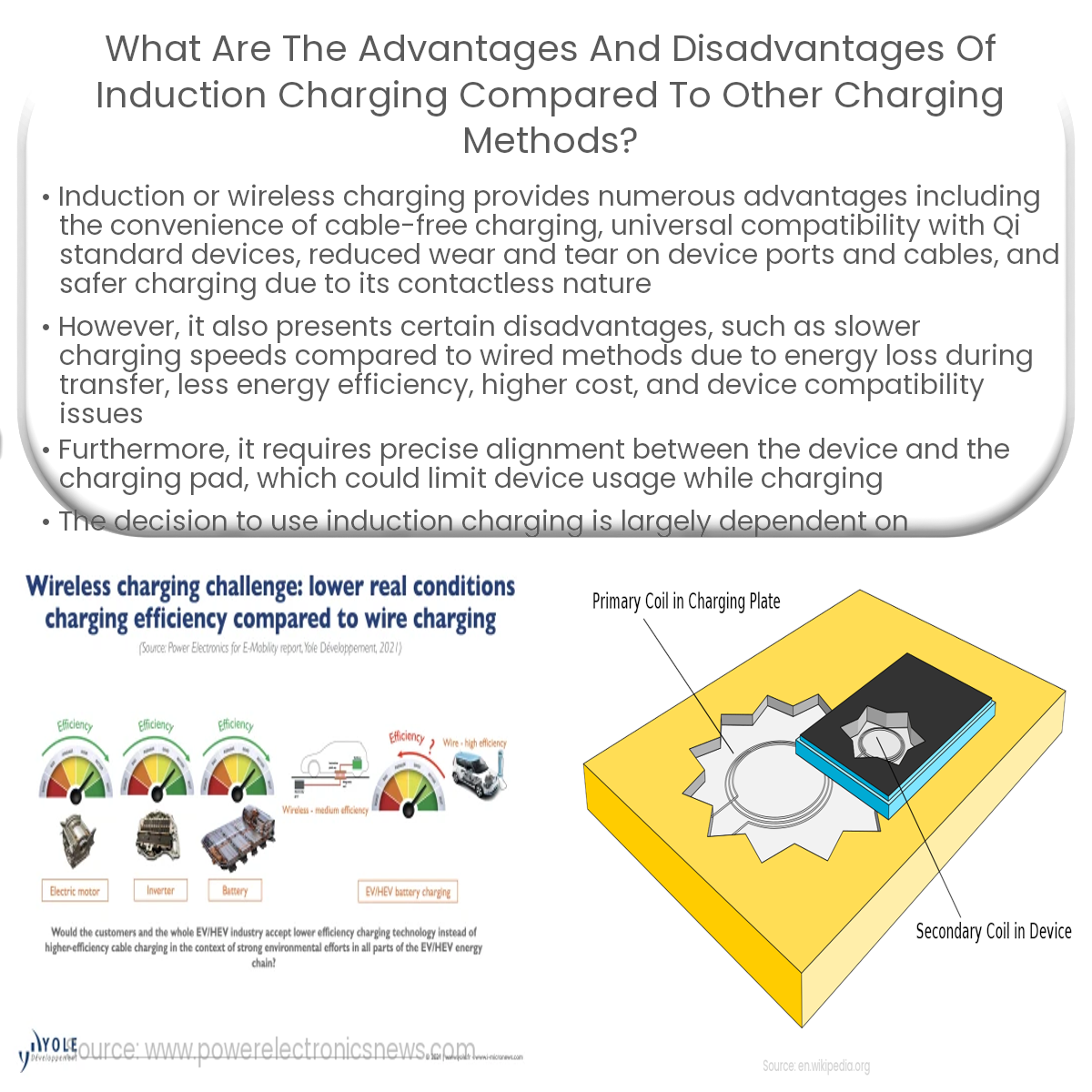Induction charging offers convenience, universal compatibility, and reduced wear, but has slower speeds, reduced efficiency, and positioning limitations.
Induction Charging: Advantages and Disadvantages Compared to Other Charging Methods
Induction charging, also known as wireless charging, is a popular technology that enables devices to be charged without the need for a physical cable connection. In this article, we’ll explore the advantages and disadvantages of induction charging compared to traditional charging methods.
Advantages of Induction Charging
- Convenience: Induction charging eliminates the need for cables, making it easier for users to charge their devices. Simply placing the device on a charging pad or within proximity to the charger is enough to initiate the charging process.
- Universal Compatibility: Many wireless chargers utilize the Qi standard, which ensures compatibility across a wide range of devices. This allows users to charge multiple devices with a single charging pad, reducing clutter and the need for multiple chargers.
- Reduced Wear and Tear: Since there are no physical connections, induction charging reduces wear and tear on device ports and charging cables, which can extend the lifespan of your gadgets.
- Safer Charging: Induction charging offers a sealed, contactless solution, which eliminates the risk of electric shock and reduces the chances of short-circuiting or damage due to water exposure.
Disadvantages of Induction Charging
- Slower Charging Speeds: Compared to wired charging methods, induction charging typically offers slower charging speeds. This is due to energy loss during the transfer process between the charging pad and the device.
- Less Energy Efficient: Induction charging is generally less energy efficient than traditional charging methods. This is because of the energy lost in the form of heat during the wireless transfer process.
- Cost: Wireless chargers tend to be more expensive than their wired counterparts, which can be a deterrent for cost-conscious consumers.
- Device Compatibility: While many devices now support induction charging, there are still some that do not. Users with incompatible devices will need to purchase an additional adapter or case to enable wireless charging.
- Positioning Limitations: Induction charging requires proper alignment between the device and the charging pad, which can be inconvenient and limit the ability to use your device while it is charging.
In conclusion, induction charging offers several advantages, including convenience, universal compatibility, and reduced wear and tear. However, it also comes with its share of disadvantages, such as slower charging speeds, reduced energy efficiency, and positioning limitations. Ultimately, the choice between induction charging and other charging methods depends on individual preferences and priorities.


